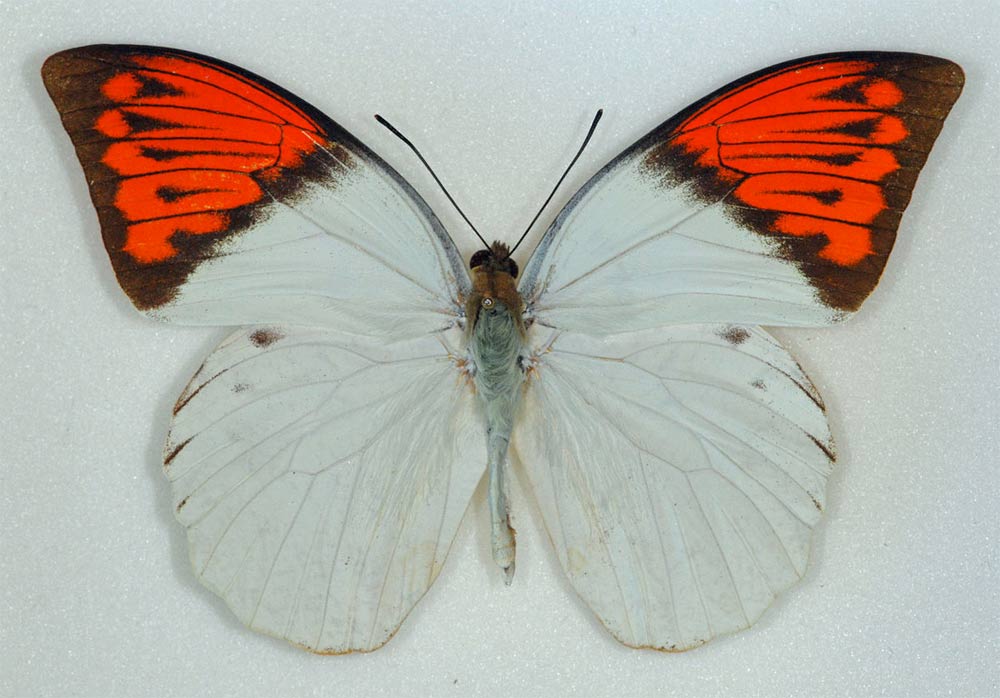Beautiful Butterfly Wings Hold Sea Snail's Toxin

An Asian butterfly's white wings tipped with vibrant red-orange are not only eye catching, they contain a poison, scientists have found.
They share this venom with an unlikely counterpart: predatory sea snails, which harpoon their prey to inject a cocktail of paralyzing venoms, including this one.
The butterfly, Hebomoia glaucippe, likely uses the toxin as a defense rather than a weapon, writes the Austrian research team, noting that many of the butterfly's predators, including birds, ants and the orchid mantis, avoid the wings. Hungry geckos, however, may not be bothered by it, because they eat the entire animal, wings and all, they add.
The team analyzed the proteins from the bodies and wings of H. glaucippe butterflies collected from multiple locations in southeastern Asia, finding a relatively high abundance of the toxin called glacontryphan-M. This toxin has so far only been found in the sea snail species Conus marmoreus, commonly known as the marble cone snail.
The researchers write they are now examining samples of the butterfly collected elsewhere for the toxin and looking at other toxic animals for clues as to the evolutionary reason a butterfly and sea snail share an identical toxin.
The study was published online today (Oct. 15) in the journal Proceedings of the National Academy of Sciences.
Follow LiveScience on Twitter @livescience. We're also on Facebook & Google+.
Sign up for the Live Science daily newsletter now
Get the world’s most fascinating discoveries delivered straight to your inbox.










